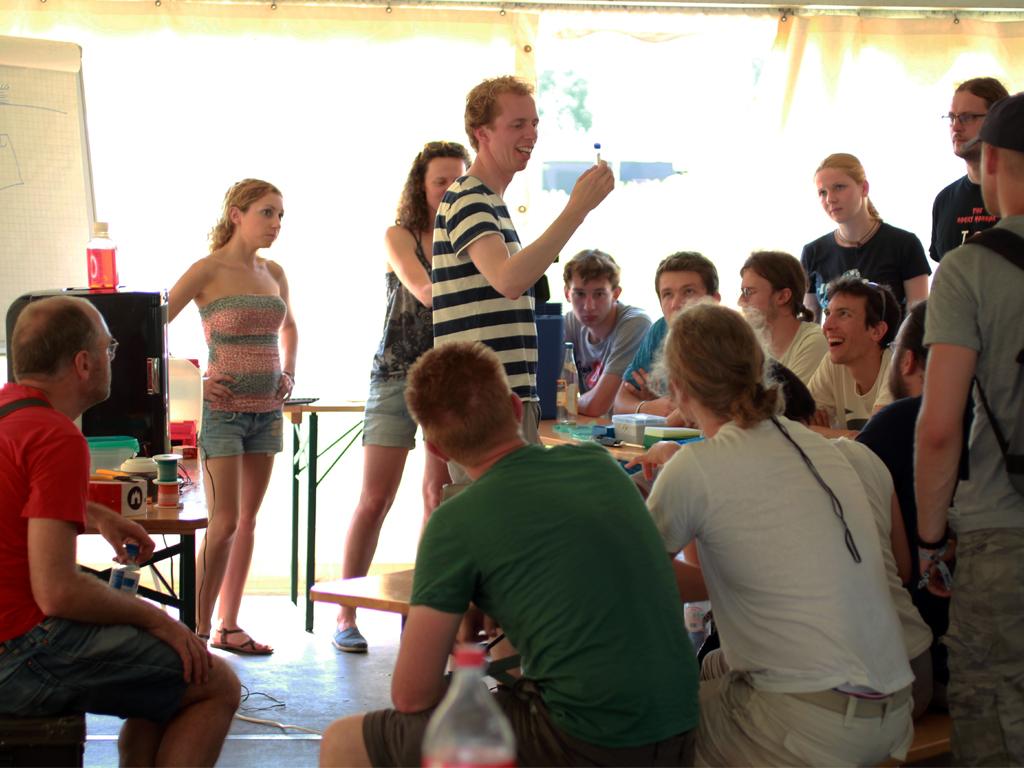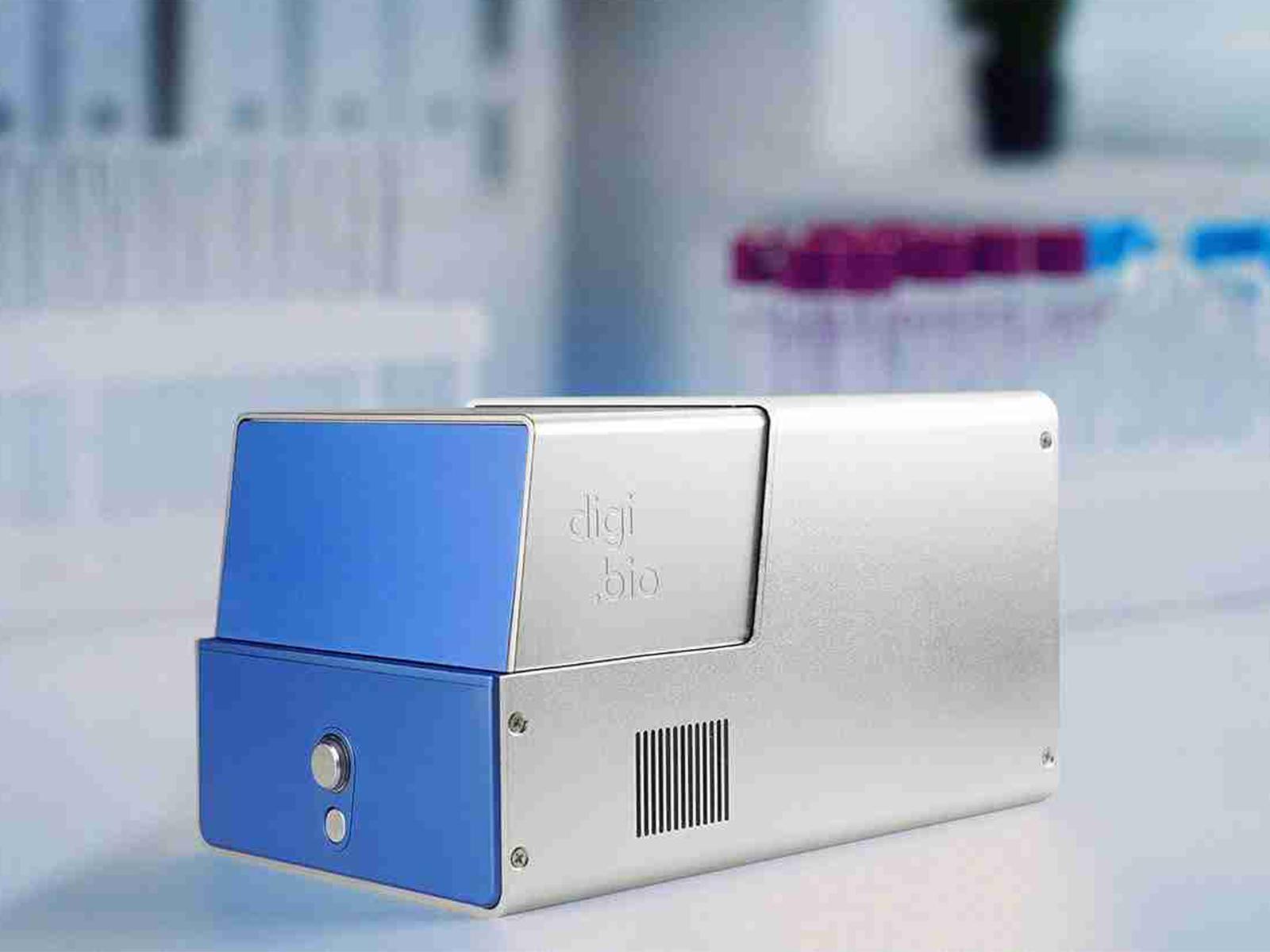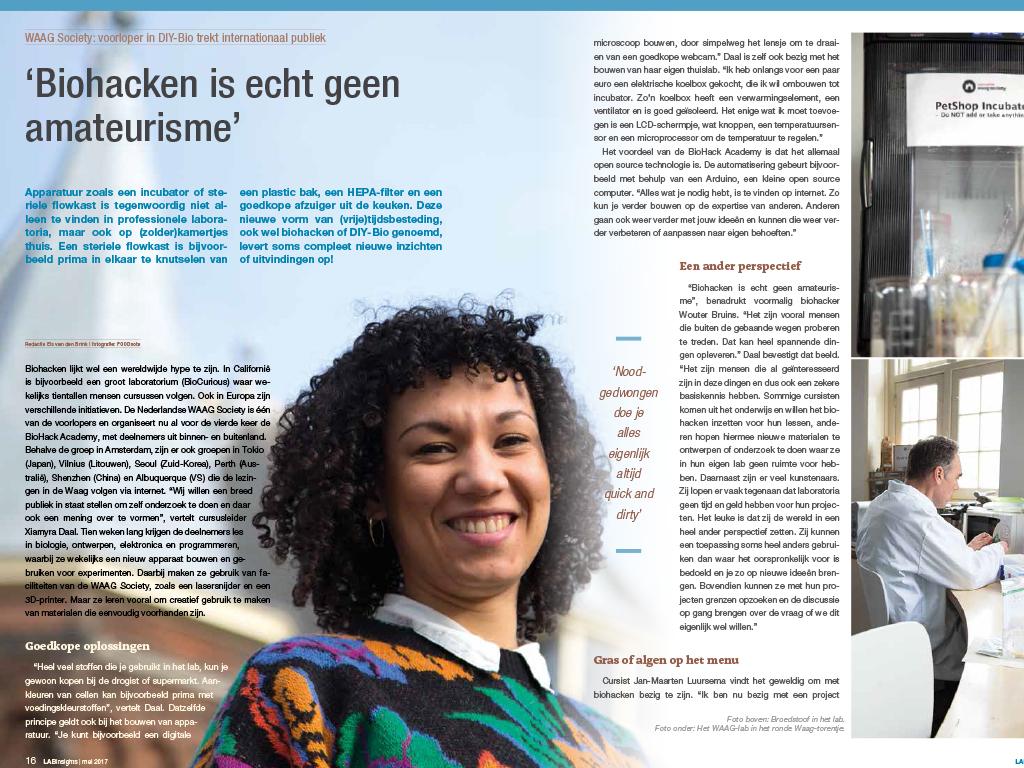On Friday, the 2nd of August, the Open Wetlab participated at OHM 2013 (Observe Hack Make 2013), with two different workshops. The challenge was not only to successfully present the workshops, but to intrigue participants from all around the world to observe, hack, make with us and interact with each other.
After a brief introduction, we proceeded with two workshops: DNA fingerprinting and building bio electricity reactors. Almost 20 people armed with a strong will for participation, triggered us all for giving our best! It was a diverse event that included theory, practice, experimentation and discussion around biotechnology, genetics, how to hack fingerprints and DNA, and of course safety rules for sterile environment and lab safety. Moreover, participants were confronted with ‘Innoculab’, which is a platform for open source hardware and open source protocols in biotechnology.
DNA Fingerprinting
At the first part of the workshop, we started with some theory on biotechnology and the 'hello world'-experiments, that simply demonstrate that something works as it should. There was a discussion in genetics and what one can visualize and how to characterize DNA. This is what is called in CSI-like terms 'DNA fingerprinting'. While this discussion was in progress, we were actually being confronted with what we would be doing later in the workshop, which turned into co-creation with the audience. We further talked about DIY lab practices and discussed experimentation as a process in the biotechnology.
This workshop demonstrated the process needed in order to investigate DNA evidence from several given samples. Moreover we were taught the vulnerabilities of this method were also presented along with the ways to hack it. After collecting all the necessary ingredients: DNA, buffers and enzymes, we mixed the ingredients with the help of the micropipettes. We incubated the samples at 37°C for 45 minutes and then we poured the agarose gel in a special lasercut box, in which we empowered the samples with a certain amount of voltage, in order to provide us with the information we wanted – the wanted DNA.
The goal of this workshop was to confront the audience with DNA structure, DNA analysis and how genetics can be ‘hacked’. Moreover, except from the already notions mentioned, the audience co-operated in order to play ‘a game’ in order to investigate a crime! To find out ‘Who done it?’

Bio electricity reactors
In the beginning of the workshop, we concretized the blurring boundaries between life science and electronics, and briefly introduced to the audience how bacterial nanowire networks can be wired up to our own electrical circuit. We also gave a brief lecture on how microbes can convert hydrocarbons to electrons, generating enough current to power a simple device.
15 participants dived almost into the surrounding canals in order to ‘catch’ as much mud as possible! They were provided with a proper plastic tupperware each, in which they firstly placed a layer of carbon and then the mud they collected, without any the sticks and leaves. Afterwards, they placed at the top of each container a second layer of carbon in order to tap the electrical current. Then wires were added within the containers and a multimeter as well, in order to measure the voltage created. After this procedure living microbes would be able to produce electrical currents that could bring light to off-grid places or even charge mobile phones.
The goal of this workshop was to engage more people in exploring what kind of bioreactors have been build in the past, and which are the current improvements. Moreover, participants explored which is the meaning of bioelectricity in terms of technology, design and societal impact. Do not forget that recently it was found that soil microbes grow extensive networks of conducting nanowires.
More photos in this Flickr set.


